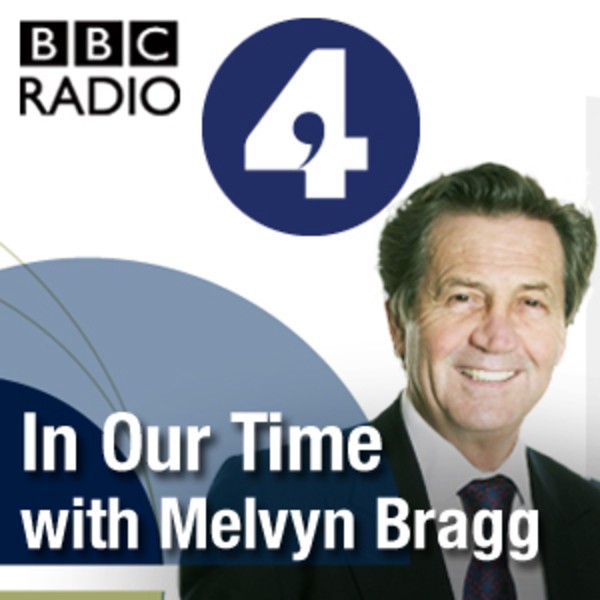
Monet in England
Loading player...
Melvyn Bragg and guests discuss the work of the great French Impressionist Claude Monet (1840-1926) in London, initially in 1870 and then from 1899. He spent his first visit in poverty, escaping from war in France, while by the second he had become so commercially successful that he stayed at the Savoy Hotel. There, from his balcony, he began a series of almost a hundred paintings that captured the essence of this dynamic city at that time, with fog and smoke almost obscuring the bridges, boats and Houses of Parliament. The pollution was terrible for health but the diffraction through the sooty droplets offered an ever-changing light that captivated Monet, and he was to paint the Thames more than he did his water lilies or haystacks or Rouen Cathedral. On his return to France, Monet appeared to have a new confidence to explore an art that was more abstract than impressionist.WithKaren Serres
Senior Curator of Paintings at the Courtauld Gallery, London
Curator of the exhibition 'Monet and London. Views of the Thames'Frances Fowle
Professor of Nineteenth-Century Art at the University of Edinburgh and Senior Curator of French Art at the National Galleries of ScotlandAnd Jackie Wullschläger
Chief Art Critic for the Financial Times and author of ‘Monet, The Restless Vision’In Our Time is a BBC Studios Audio ProductionProducer: Simon Tillotson
Studio production: John GoudieReading list:Caroline Corbeau Parsons, Impressionists in London: French Artists in Exile 1870-1904 (Tate Publishing, 2017)Frances Fowle, Monet and French Landscape: Vétheuil and Normandy (National Galleries of Scotland, 2007), especially the chapter ‘Making Money out of Monet: Marketing Monet in Britain 1870-1905’Robert Gordon and Andrew Forge, Monet (Harry N. Abrams, 1983)Paul Hayes Tucker, Monet in the ’90s: The Series Paintings (Yale University Press, 1990)Paul Hayes Tucker, Monet in the 20th Century (Yale University Press, 1998)Katharine A. Lochnan, Turner, Whistler, Monet (Tate Publishing, 2005)Nicholas Reed, Monet and the Thames: Paintings and Modern Views of Monet’s London (Lilburne Press, 1998)Grace Seiberling, Monet in London (High Museum of Art, 1988)Karen Serres, Frances Fowle and Jennifer A. Thompson, Monet and London: Views of the Thames (Paul Holberton Publishing, 2024 – catalogue to accompany Courtauld Gallery exhibition)Charles Stuckey, Monet: A Retrospective (Random House, 1985)Daniel Wildenstein, Monet: The Triumph of Impressionism (first published 1996; Taschen, 2022)Jackie Wullschläger, Monet: The Restless Vision (Allen Lane, 2023)
Senior Curator of Paintings at the Courtauld Gallery, London
Curator of the exhibition 'Monet and London. Views of the Thames'Frances Fowle
Professor of Nineteenth-Century Art at the University of Edinburgh and Senior Curator of French Art at the National Galleries of ScotlandAnd Jackie Wullschläger
Chief Art Critic for the Financial Times and author of ‘Monet, The Restless Vision’In Our Time is a BBC Studios Audio ProductionProducer: Simon Tillotson
Studio production: John GoudieReading list:Caroline Corbeau Parsons, Impressionists in London: French Artists in Exile 1870-1904 (Tate Publishing, 2017)Frances Fowle, Monet and French Landscape: Vétheuil and Normandy (National Galleries of Scotland, 2007), especially the chapter ‘Making Money out of Monet: Marketing Monet in Britain 1870-1905’Robert Gordon and Andrew Forge, Monet (Harry N. Abrams, 1983)Paul Hayes Tucker, Monet in the ’90s: The Series Paintings (Yale University Press, 1990)Paul Hayes Tucker, Monet in the 20th Century (Yale University Press, 1998)Katharine A. Lochnan, Turner, Whistler, Monet (Tate Publishing, 2005)Nicholas Reed, Monet and the Thames: Paintings and Modern Views of Monet’s London (Lilburne Press, 1998)Grace Seiberling, Monet in London (High Museum of Art, 1988)Karen Serres, Frances Fowle and Jennifer A. Thompson, Monet and London: Views of the Thames (Paul Holberton Publishing, 2024 – catalogue to accompany Courtauld Gallery exhibition)Charles Stuckey, Monet: A Retrospective (Random House, 1985)Daniel Wildenstein, Monet: The Triumph of Impressionism (first published 1996; Taschen, 2022)Jackie Wullschläger, Monet: The Restless Vision (Allen Lane, 2023)